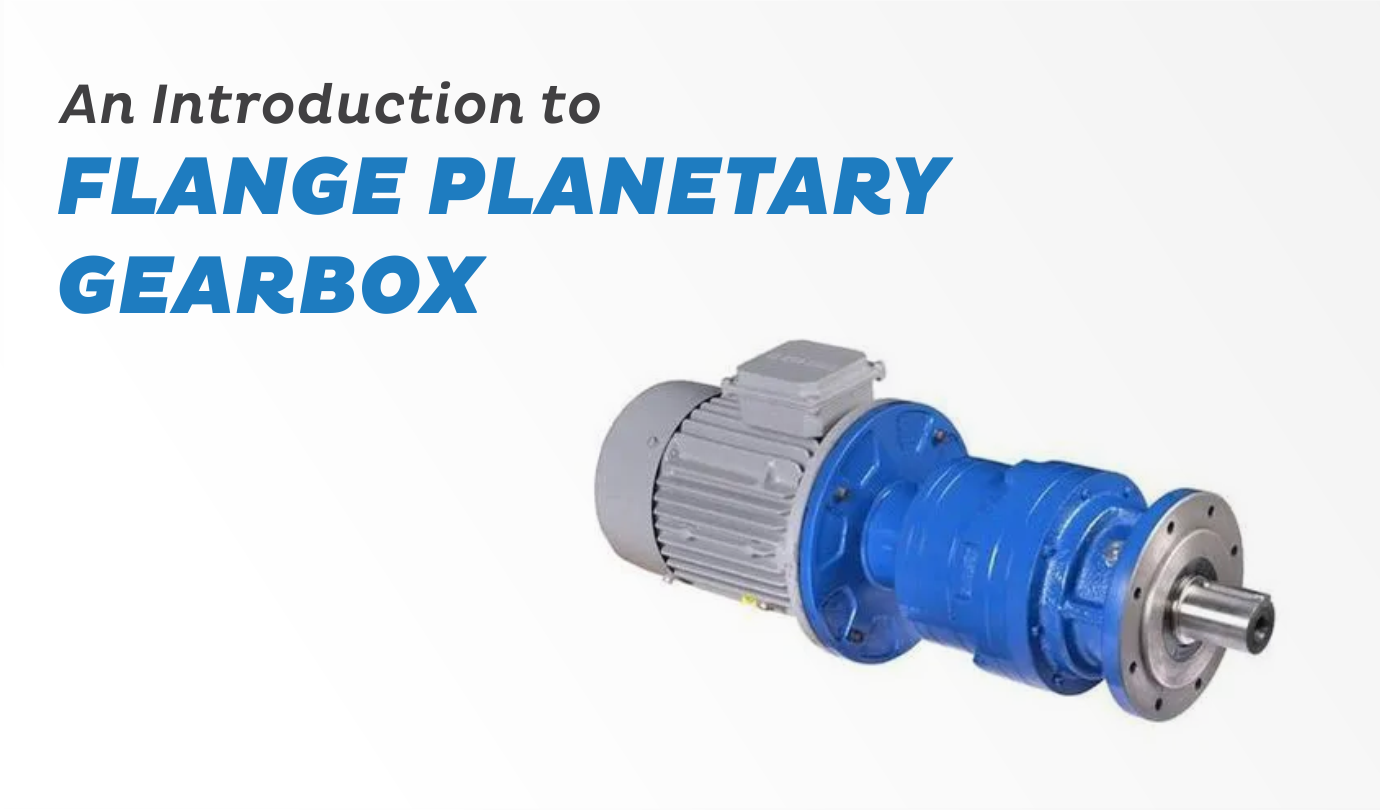The servo motor uses the flange planetary gearbox, a small gearbox with an output flange design, to reduce speed while still transferring large torques.
It is common for planetary gearboxes to be updated with right-angle structures or flange shafts, allowing for the input and output shaft alignment. A planetary gearbox aims to lower input speed and provide the most torque in a small package. Gear reducers are chosen for electric motors and other power transfer and speed reduction applications. The planetary gear reducer, or inline planetary gearbox reducer, is another name for the basic planetary gearbox.
The Characteristics Of A Flange Planetary Gearbox
Because of the shorter cylindrical output shaft, the flange planetary gearbox’s flange shaft is shorter than that of a conventionally constructed planetary gearbox. The small flange planetary gearbox is equivalent to a typical planetary gearbox with a normal output shaft. Still, it offers more flexibility because of its flange design, which makes it easier to connect and provides superior force conveyance. The input flange of a general-purpose planetary gearbox may be customized to fit your electric motor, allowing you to get the greatest possible nominal torque while still using a small, compact output flange.
An advantage for machinists of the flange output design is the big diameter, which allows for more torsional rigidity to be achieved. In applications demanding high accuracy and quick cycles of movement, such as powered indexing tables or other components, the flange planetary gearbox reducer benefits from this capability. Some flange planetary gearboxes can accommodate a wide range of drive belt types with the use of a pulley.
Where Are Flange Planetary Gearboxes Used?
The flange planetary gearbox, with its compact form, low backlash, high torsional rigidity, and quiet and effective operations, is an excellent investment for many power transmission as well as motion control applications today. Construction, medical, and conveyor systems, as well as automated machinery such as automatic welding equipment, material handling equipment, food processing machines, robots, and many contemporary transportation applications, may all benefit from their simple attachment and high torque.
The Layout of a Flange Planetary Gearbox
Flange Shaft
To put it another way, when it comes to gearbox components, they are versatile enough to be used with many different types of machine parts or motors. Using the output flange design, the gear reducer may be used with pulleys, gears, rotary tables, and many other transmission shaft parts. Because of this, the power flows must be redirected when using a flange planetary gearbox for motion control. A dowel hole is often used to anchor the flange planetary gearbox and flange to the machine element during installation. Servo, stepper, and brushless motor systems may benefit from the torsional stiffness provided by the input flange of a flanged planetary gearbox.
Planetary Gearbox
A planetary gearbox is made up of a “sun gear” in the center, a planetary ring around it, an internal gear, and a carrier. The external ring with teeth facing inward is the internal gear. With the help of these planetary gears, this planet-wheel configuration may be made to revolve around the sun. Carrier gears hold the planetary gears in place, allowing the sun gear to rotate smoothly. The sun gear has planetary gears and a carrier that spins on the axes as the input is delivered to the sun gear. Speed reduction may be made consistently and effectively because of the varied gear teeth in each of these gears.
The flange planetary gearbox’s work depends on the amount of torque it can handle. In order to get the most out of the gearbox, mechanics need to know how much torque to apply before putting it in place, as it may absorb all of the radial and axial force and generate a huge amount of power to withstand a variety of physical conditions. In order to accurately calculate torques, it is necessary to consider a wide range of physical properties that determine how well movements are performed.
Lubrication
In spite of its efficiency in motion-control applications, appropriate lubrication of the rolling and sliding surfaces inside the compact structure still relies on good lubrication. The lubrication system in modern gearboxes has been upgraded to a lifetime, built-in form. Grease, oil, or synthetic gel are the most common lubricants in planetary gears.
The lubrication makes the operation quiet and allows it to be readily cooled. The planetary gearbox’s heat dissipation is one of its drawbacks. As a result of the device’s small size, it produces more heat and is more difficult to cool. Because of the flange planetary gearbox’s small design, lubricating lubricants are a must.
Which Industries Utilise Flange Planetary Gears?
Flange planetary gearboxes are often utilized when weight and space are at a premium; nonetheless, these gearboxes demand significant deceleration and torque. There are several industries, notably tractors, where enormous quantities of torque are needed in order to drive the wheels. Turbine engines, automatic gearboxes, and electric screwdrivers are just a few of the applications for which they have been employed.
The torque produced by a large number of flange planetary gearboxes sharing a single load is enormous. A parallel axis gear system with this layout has more contact surfaces and a broader area of contact between the gears. The gear will be less susceptible to damage since the weight is spread more evenly.
Various devices may be employed in a wide range of sectors because of the wide range of options and high dependability of these gadgets. Examples of exclusive uses are motorized wheels, winches, automated door openers, conveyors, surgical applications, fluid transfer, and machines. They’re prevalent in a variety of fields, including, but not limited to:
- Aviation
- Aircraft
- Drilling
- Conveyors
- Medical
- Robotics
Flange Planetary Gearbox Benefits
Flange planetary gearboxes have a wide diameter output shaft that may attain greater torsional stiffness, which is one of its primary advantages. These gearboxes are ideal for situations where the direction of motion is continually changing. It is possible to utilize flange gearboxes for drive systems in conjunction with pulleys and various kinds of belts.
Depending on the frame size, this right-angle gearbox may save up to 30% of space compared to other right-angle gearboxes. To better use small locations, the gearbox may be flexibly installed in either direction and has a low mounting height. It is possible to easily build drive components, for example, belt pulleys and belt drives, as well as rack and pinion systems. Compared to the output shaft with feather buttons, the gearbox has a larger flange output shaft diameter, which may have a five times higher torsional rigidity. Because flange planetary gearboxes often share the same loads, their efficiency drops by 98 percent with little heat loss and noise. With a double or triple stage reduction, efficiency is barely affected, operating at more than 92%.
Get High-Quality Planetary Gearboxes With Premium Transmission
It’s crucial to use a quality and reputed planetary gear manufacturer to make the most of these gears, like Premium Transmission. Contact our team of experts to learn more now!











